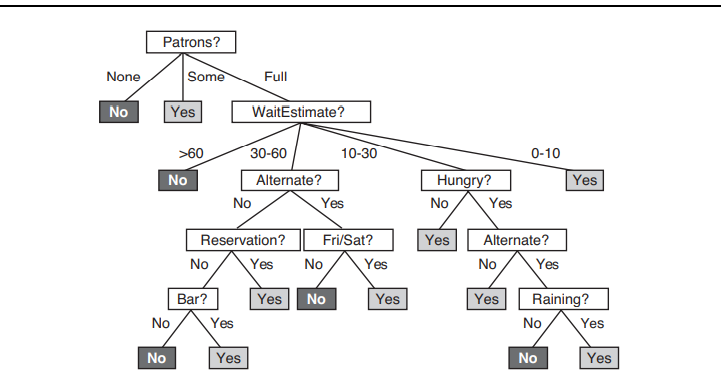A decision tree reaches its decision by performing a sequence of tests. Each internal node in the tree corresponds to a test of the value of one of the input attributes, Ai, and the branches from the node are labeled with the possible values of the attribute, Ai = vik. Each leaf node in the tree specifies a value to be returned by the function. The decision tree representation is natural for humans; indeed, many “How To” manuals (e.g., for car repair) are written entirely as a single decision tree stretching over hundreds of pages
Expressiveness of decision trees
A Boolean decision tree is logically equivalent to the assertion that the goal attribute is true if and only if the input attributes satisfy one of the paths leading to a leaf with value true. Writing this out in propositional logic, we have
Goal ⇔ (Path1 ∨ Path2 ∨···)
Inducing decision trees from examples
An example for a Boolean decision tree consists of an (x, y) pair, where x is a vector of values for the input attributes, and y is a single Boolean output value

